Breaking
From the streets to the Olympics
Four generations of breakers grapple with the changing nature of breakdancing.
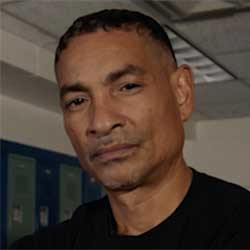
Norman "Normski" Scott was part of the pioneering Rock Steady Crew in 1980s New York. He fears the communities that created breakdancing are being left behind.

Antonio "Tazk" Castillo saw little opportunity for breakdancers growing up in the 1990s, so he started a school and helped transform the street dance into a credible sport.
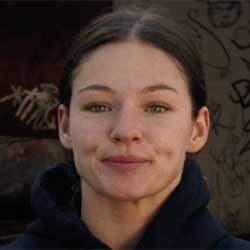
Kateryna "B-Girl Kate" Pavlenko started breakdancing in 2009 as a teenager in Kharkiv, Ukraine. Today, she hopes to win Olympic gold for her war-torn country.
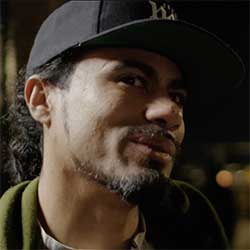
Victor "Kid Glyde" Alicea is leading the next generation of the iconic Dynamic Rockers crew — and spreading his love for breakdancing around the world.
How did breakdancing, a 1970s and '80s street dance created by Black and Latino kids in the Bronx, explode into a global phenomenon and win a spot at the 2024 Summer Olympics? And what does it mean for a subculture to go mainstream? In this documentary, B-boys and B-girls grapple with the changing nature of "breaking."
Victor “Kid Glyde” Alicea
So, the first time I heard about breaking going to the Olympics, I was like, what? That’s crazy. And I was like, wait, we’re the first dance, the only dance, in the Olympics. I was really excited. I was happy for us, you know? I was just worried about, you know, it being corny and being commercial. But I always believed that our culture is strong.
Norman “Normski” Scott
Breakdancing is the art of love. It’s a rhythm on the floor. It’s a feeling that you get. It’s a sign of creativity. And it’s an art that really derives from the souls and the heart of kids in poverty.
Breakdancing — also known as breaking — was created by Black and Latino kids in the Bronx in the 1970s and ’80s.
1980s News Anchor
For breakers like Chino Lopez, it’s made violence on the streets obsolete.
Chino Lopez
Yeah, there was a lot of fighting. And the kids started figuring out, you know, we don’t need this anymore.
That’s no good, you know? Let’s do something worthwhile. Let’s dance.
Norman “Normski” Scott was a part of the pioneering Rock Steady Crew.
Norman “Normski” Scott
You know, we were in tenement housing — projects. One of the reasons that I got better is that I danced every day. I woke up, and it was in my soul. I just felt like, damn. I woke up, I’d dance. I’m in the bathroom, I’m looking in the mirror. I’m dancing.







When I grew up, you could actually move around the city. You could have a block party. I could, like, call you up and be like, ‘Yo. Come up, pull up. Pull up to my block.’
If you were trying to reach that pedestal in your life, you would battle. You know, back in the day, it was a crowd thing, because it’s a thumping thing.
It’s a spiritual thing. You don’t need the judges. The crowd would laugh. Or sometimes your friends would walk you away from the battle. It’s just the crowd would tell you, ‘Yo, yo, bro, don’t even go back in there, bro.’
Norman and his crewmates soon began appearing in movies and on TV.
Antonio “Tazk” Castillo
The guys I saw in the movies, those were my idols.
I’m originally from Mexico. I’m from a little ranch called Colonia Madero.
We didn’t have barely a TV. We didn’t have, like, barely a radio. We’re talking about a little ranch that’s, like, dirt roads and homes made of adobe.
My cousins used to come and visit us every Christmas or, like, holiday breaks. And this one time, they came down there, and they decided that they wanted to put together, like, a little performance for my family.
You know, the performance they put together was them throwing themselves on the ground, right? And I didn’t know what was going on. I just assumed that they kind of knew what they were doing. When I saw breaking, it was, like, a huge shock. Like, this is America.
Castillo immigrated to the U.S. with his family in 1990.
After that, I was just obsessed with it. And I never stopped.
With breaking, I was able to express myself in ways that I couldn’t do any other way. I saw it as a career. And everyone around me was, like, what are you thinking? I had a girlfriend break up with me because all I wanted to do was break. And I told her this is what I’m going to do with my life.
This is what I — there’s nothing else I want to do. And she broke up with me. And I don’t blame her, because there really wasn’t any careers, any opportunities.
Kateryna “B-Girl Kate” Pavlenko
My name is Kateryna Pavlenko. I’m mostly known as Kate in breaking community. I’m from Kharkiv, Ukraine, but I live in Los Angeles, California.
I started breaking when I was 14 years old. It was 2009. The way I got into it, it was pretty funny, because my classmate, he was already going to extreme dance. That’s how it’s called, and he brought me with him.
He’s like, ‘You’re probably going to like it.’ Because I was kind of a teenager, wanted to do something anti-girly. I don’t know, just protesting against the world. Want to prove something. You don’t know what. It took me maybe a month. I learned a little basics. Then I left to my grandmother’s village for summer holidays.
And then my friend writes me and says, like, oh, there is an event you can compete as a B-girl.
I was like, easy, I’m doing this. I’m coming back from three months break, and I lose. And I do, pretty bad because I don’t really know how to dance. I had, like, just a couple moves.
It took me like, oh, but I don’t want to, I don’t want to be a loser. I want to become better.
People really are very surprised that breaking is still alive, which is, for me, crazy. Some people think that it’s still in the ’80s, where people spin on their head, on the cardboard and everything, but it evolved and got way better.
It got way more exposure. More people appreciate breaking as an art or a sport. I think when breaking gets into Olympics, people will see how amazing it is.
Norman “Normski” Scott
I am considered a pioneer of electric boogie and breakdancing. I was part of Rock Steady Crew — the first breakdance crew that sort of spread breakdancing to the entire world.
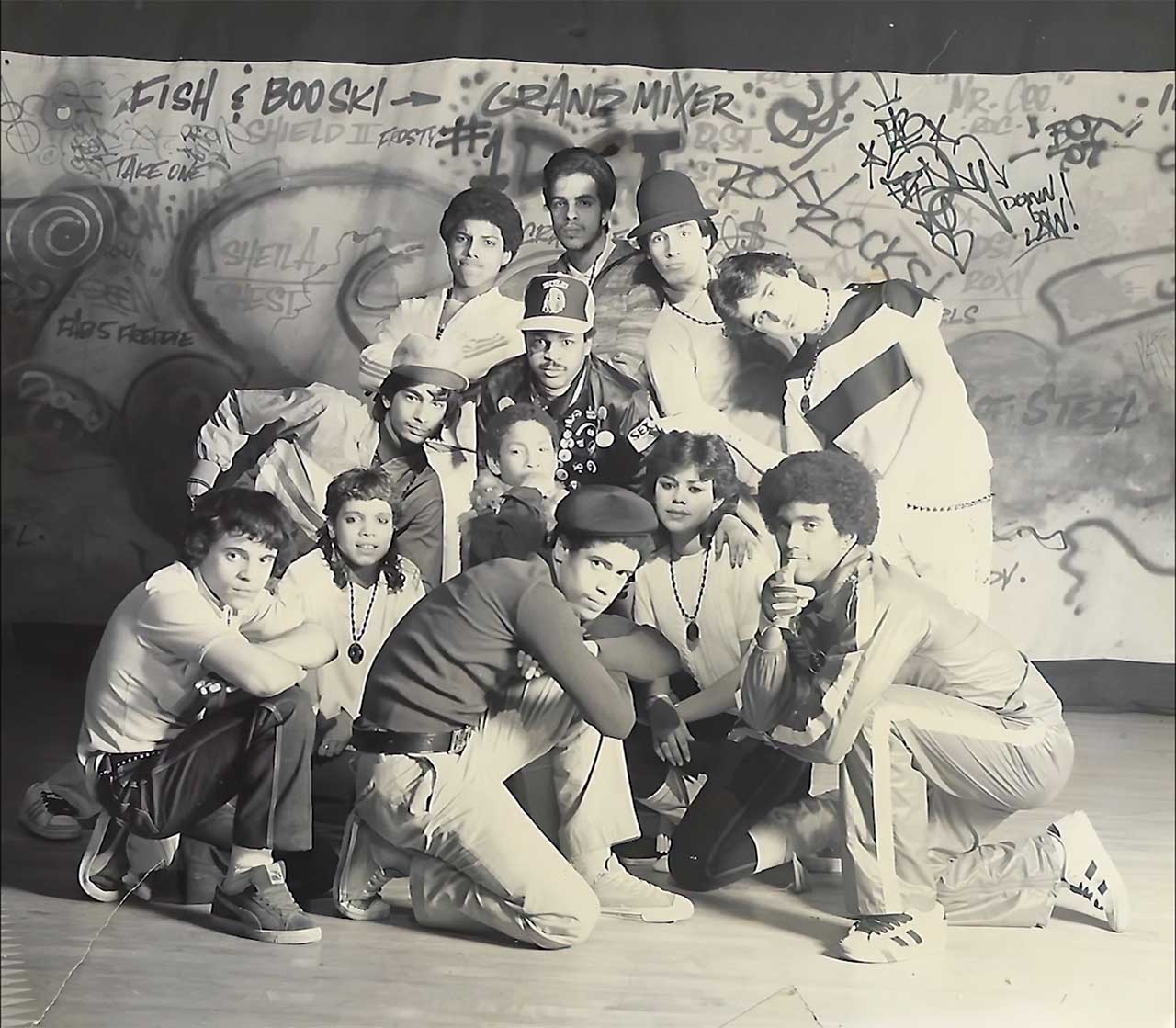
Rock Steady Crew
Who am I today? I’m a man that’s really trying to work to change society, make sure our children have equitable opportunities.
For more than 25 years, Norman has taught at a New York transfer school — a high school that accepts kids who have dropped out or fallen behind in their education.
He is now working to revive breakdancing in the New York neighborhoods that created it.
Breakdancing, since we created it, should be big in New York City, but it’s an ant. It’s in an ant phase. So, we see a culture disappearing. It’s sad. It’s really sad. It was a vibe thing.
I was on high vibe time.
What an a — I was on another cloud. And I want our kids to feel that cloud, because it’s such a vibe. I don’t want them to feel what they’re feeling now. Worried to travel from block to block. Worrying about op warfare.
Radio voice over
Gunfire exploded across New York City overnight. Nine shootings, 11 victims, two dead, across the city since midnight. Two investigative reports. An 18-year-old boy who was shot near a school playground is the latest victim this week in a string of shootings around the city targeting teenagers.
Norman “Normski” Scott
I lost students that I love, and I did something about it when I lost, like, a son I loved. He was killed through this form of violence, right? Street violence. He would want me to fight for kids to have real opportunity.

Norman Scott speaking at a memorial service. (Handout video from Norman Scott)
So, I’m on that march. Whether I win or lose, at least I’ll try sincerely for people that I love.
I look in a chair, and it’s like, damn, that student’s not there.
Wow, wow. What are we doing? Our kids are getting harmed through fentanyl. Our kids are getting harmed through gang warfare, right? What are we doing? Music, dance and art are saviors for children.
Antonio “Tazk” Castillo
In 2009, I was, like, not breaking at all. And I hurt my elbow, and, you know, I was like, I’m not doing it, you know? Because I can’t do it the same way I was doing before. So, I built this fear, and I was, like, I’m just going to stay away from it.
So, I tried to go into the world and become something. Nothing was taking, you know? I didn’t have a passion for anything the same way it was for dancing.
I told my mom. I told my dad. I, like, sat them down and said, hey, listen, I don’t like working construction with my dad. And I don’t like working in stores or doing stuff like that. I want to just break full time. This is what I’m doing.
And I threw myself onto the scene, basically, and I said, I’m going to change the way things are. I’m going to come in here, I want to make a difference. I’m going to create something, because nobody’s doing this.
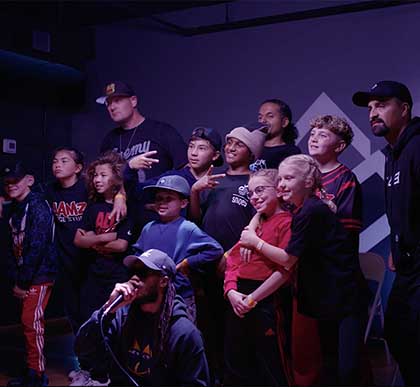
Antonio opened The Lab Breakin’ Academy in Washington, D.C., in 2011 — one of the first breakdancing schools in the U.S.
He also founded the Competitive Breakin’ League, which created a rule book for breakdancing battles.
Antonio speaking to kids:
“A lot has changed from the time that we were breaking to, like, where you guys are now. And I’m sure some of the parents here, you guys already know that breaking is going to be in the Olympics this upcoming summer. The first time ever where breaking will be a part of anything like that. You guys have something really to look up to if that’s, you know, a passion of yours that you want to pursue.”
You can see the new athlete breaker, like, born within the last 10 years. You know, it’s a whole different type of breaker. It’s not like, you know, back in the days. They come in, the parents get involved, they take them to events.
Me as a, you know, purist practitioner, I was so used to going to jams — we call them jams — and it was all adults, like, or teenagers, and we were all just doing whatever. And it was, like, very raw type of scene. And now I’m going to events, and it’s very clean. And the parents and their grandparents sometimes, and it’s, like, a different vibe.
Like, you have to get used to it, you know?
Kateryna “B-Girl Kate” Pavlenko
It’s not easy to be a B-girl in male-dominated art, but I think it was changing with times. I remember back in the days when I started, there wasn’t really many opportunities for B-girls, such as judging, giving workshops or even separating nominations so we can compete against each other.
So, it wasn’t really that big and known. But now, level of the B-girls improves. It’s crazy. Like, past three years, you get to see new faces. Sixteen-year-old girls doing incredible things. We don’t have really that thing, like, I’m going to destroy you. Like, I’m going to do everything so you don’t win, so I win.
Like, you have, of course, that competition mode, but it’s not that, you know — how to say — you’re not enemies.
Breakers are judged on several criteria, including:
- Character and personality
- Style
- Difficulty of movement
- Mastery of fundamental moves
- Musicality
- Originality and creativity
Norman “Normski” Scott
When I looked at the contest in, you know, Red Bull and all those, what did I think of it? I was like, yo, I want our babies in it. I want our kids to be a part of it.
It’s wrong to leave behind the Black and brown children who created it through struggle.
In November 2023, Norman hosted a party to celebrate 50 years of hip-hop and promote his youth breakdancing initiative.
I’m with any expansion of any art. Art is not meant to be in a capsule, but it’s also not meant to be exploited.
Victor “Kid Glyde” Alicea
Victor “Kid Glyde” Alicea is the son of legendary breakdancer Glyde of the Dynamic Rockers crew.
He founded the Kids Breaking League in New York to help preserve the artform.
From my experience, I know what it’s done for me. So, I know what it could do for the youth. And I’ve seen it. Because in breaking, you got to learn a move. And you got to mess up, and mess up, and mess up, and accept that, you know? That’s a hard thing to accept at a young age. But through the art of breaking, or through any art, you’re able to, like, all right, do it again. Do it again till you find your way.
Norman “Normski” Scott
I want the public to know that once our children clear these, this, violent episode, and we get these kids involved in peaceful elements of hip-hop, and we teach them, that will be the next evolution of hip-hop and graffiti and breakdancing. We have a right to raise them in their own art. And we have a right to protect them from violence with this art. We have no choice but to make this happen.
Antonio “Tazk” Castillo
Antonio hopes the Olympics [July 26-August 11, 2024] will boost breakdancing’s popularity — and his business. He dreams of opening breakdancing schools across the U.S.
Obviously, when I first heard that it was going to be in the Olympics, it was, like, a really exciting thing, because it’s the Olympics, right? It’s like, they’re accepting this dance. It’s no longer something that you can just look at and say, oh, these kids are just breakdancing. Whatever, right?
You can’t brush it off anymore. It’s, like, a serious discipline.
All this time, all these people told me I could never do it as a job. All these people, blah, blah, blah, blah. And it ended up going into the Olympics. So, I was kind of right the whole time to pursue that passion. For me, it was, like, validation that it was finally being accepted at a different level.
But breakdancing will not be accepted at the 2028 Olympic Games in Los Angeles. Organizers decided to omit it from the program.
The Olympics is going to see the results of what we do in Paris 2024. They will see it, and after that, it’ll be much easier for us to then go and make propositions to add us back in. But of course, we have to get organized. And that’s part of, like, what I work on now. It’s like, how do I get organized? Organize the parents? Organize the kids? Organize the people who are teaching and who are coaches? And how do we all move this thing forward?
Kateryna “B-Girl Kate” Pavlenko
Kate competed in the Olympic Qualifier Series earlier this year for a chance to represent Ukraine.
In Ukraine it’s really big, and especially the city I’m from. I’m from Kharkiv city, so it’s considered the capital of hip-hop in Ukraine. So, we had many crews. Was really big scene.
Kharkiv has been heavily bombed in Russia’s ongoing war in Ukraine.
I think every person from Ukraine got affected by this war. My parents, they all, my whole family migrated to Czech Republic, and everyone was expecting this to be, like, a month or two kind of situation. But it’s got extended, so people just started to live wherever they migrated. That’s kind of sad to — that is happening, but I’m very proud to represent the Ukrainian team. For me, it’s a big honor and, like, I’m really proud that I have this chance to do it.
Kate is heading to Paris. She won a spot on the Ukrainian Olympic Team.
Norman is working to build a youth center in the countryside where young people can learn breakdancing and other forms of hip-hop.
Norman “Normski” Scott
I think that all of our leaders have a real responsibility. And I’d like our leaders to join me and Kid Glyde, join us with our mission making sure our kids dance.
Kid Glyde will lead the Judges Evaluation Team at the Olympics.
Journalist:
Do you think there’s extra pressure on Team USA to win gold since this is the birthplace?
Victor “Kid Glyde” Alicea
Definitely, definitely a lot of pressure for Team USA to win. It’s in the Olympics. It’s something that’s big, it’s around the world. It’s in the Olympics because everybody in the world is doing it. Every country, and the USA got it, you know? Especially New Yorkers.



